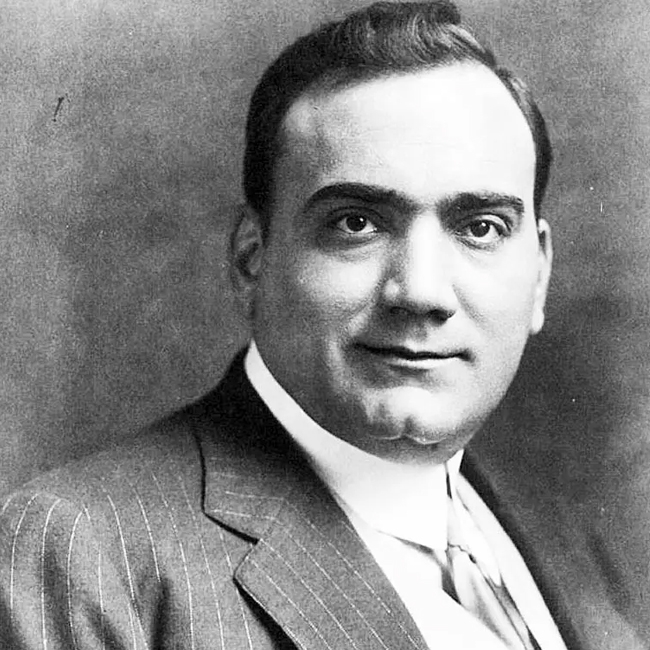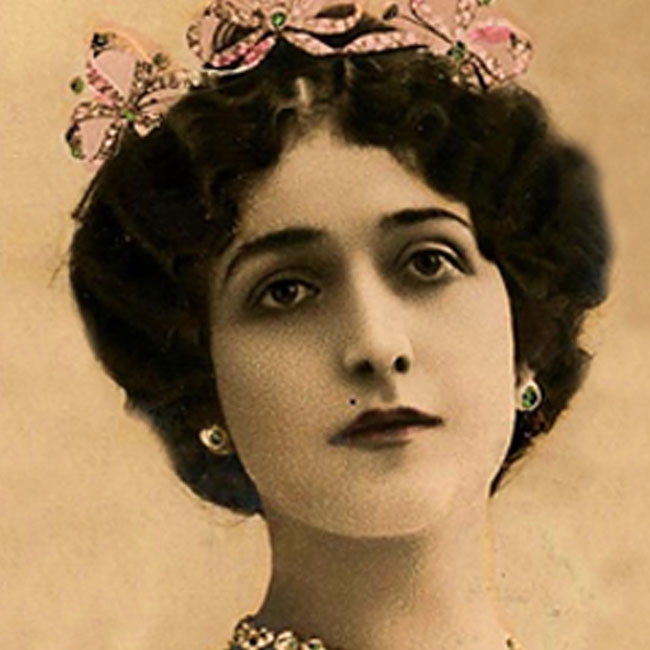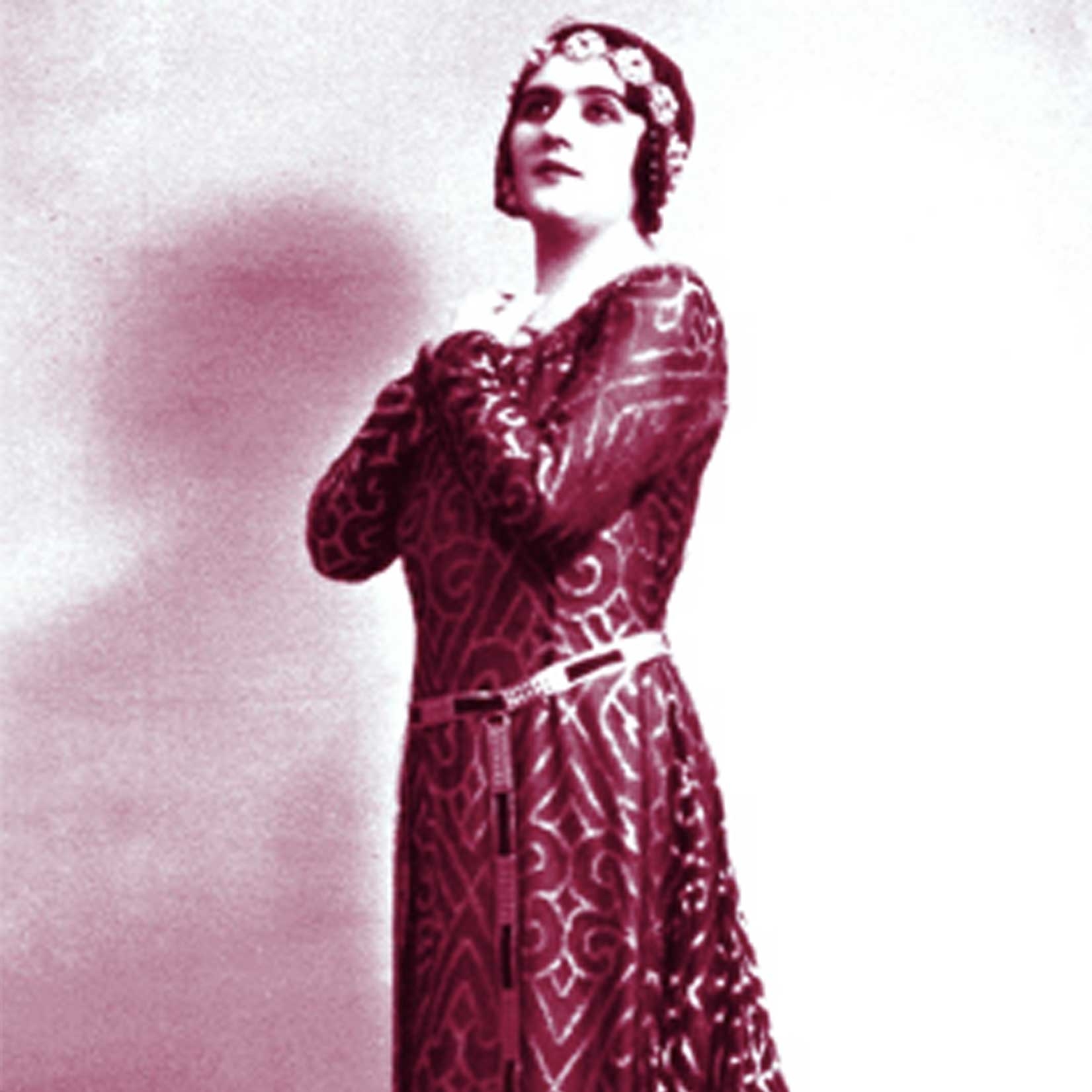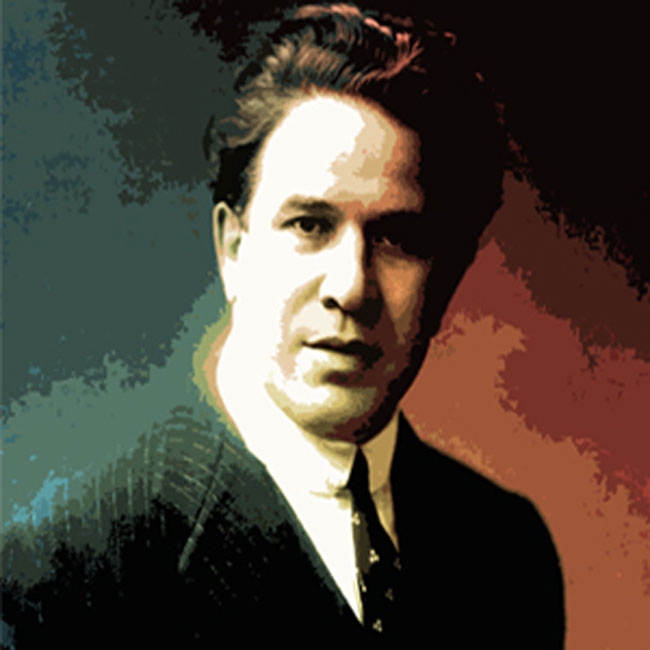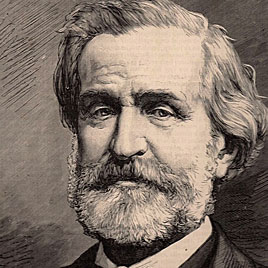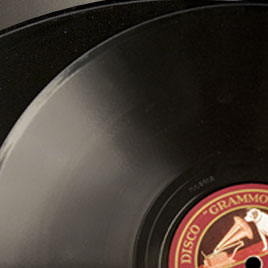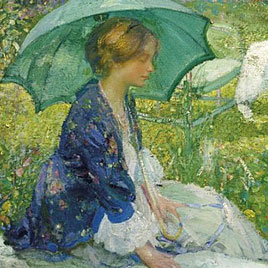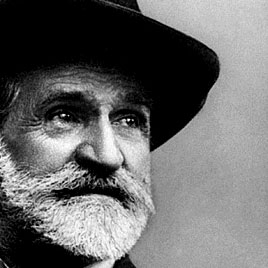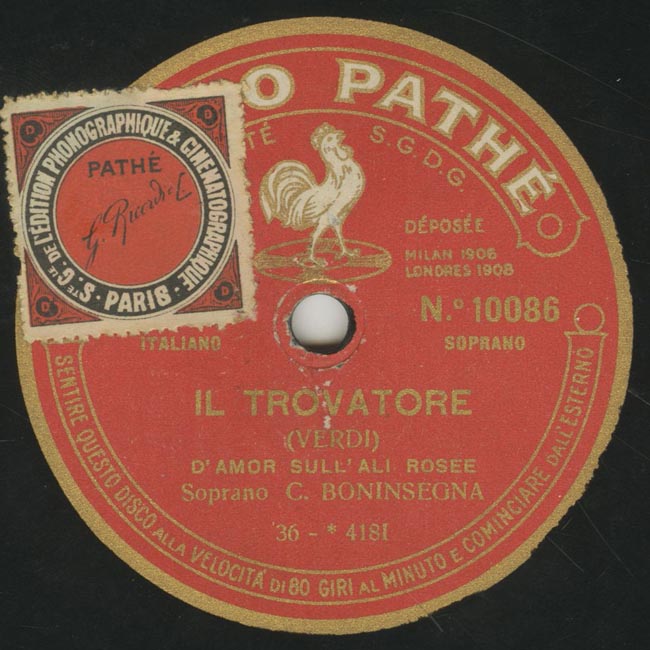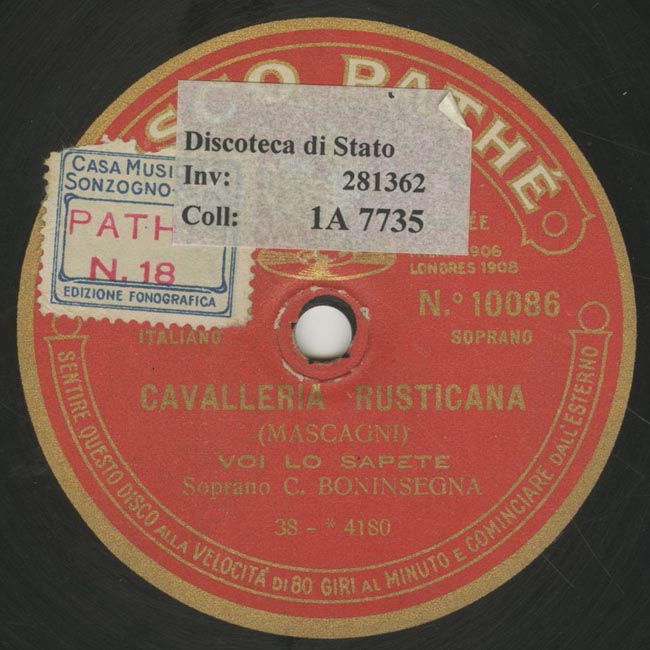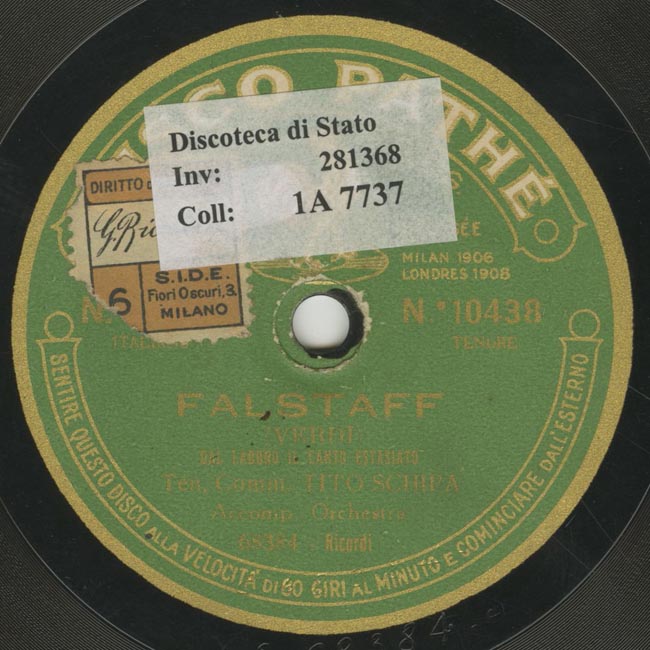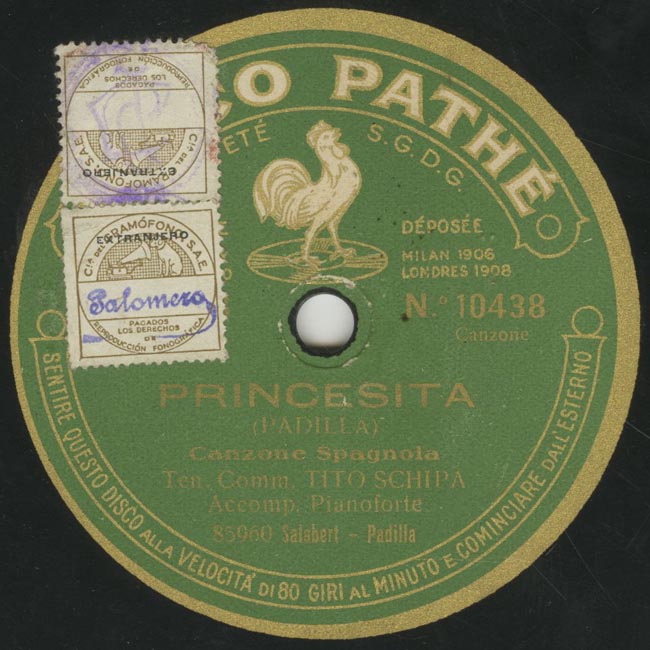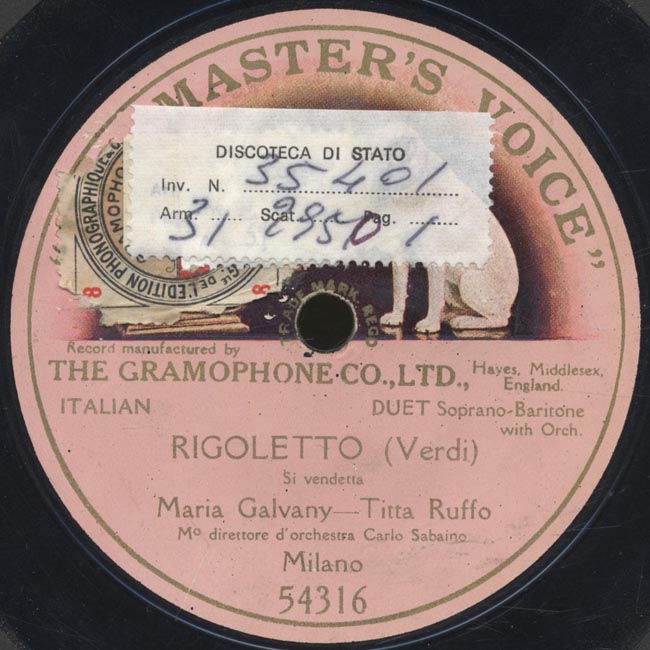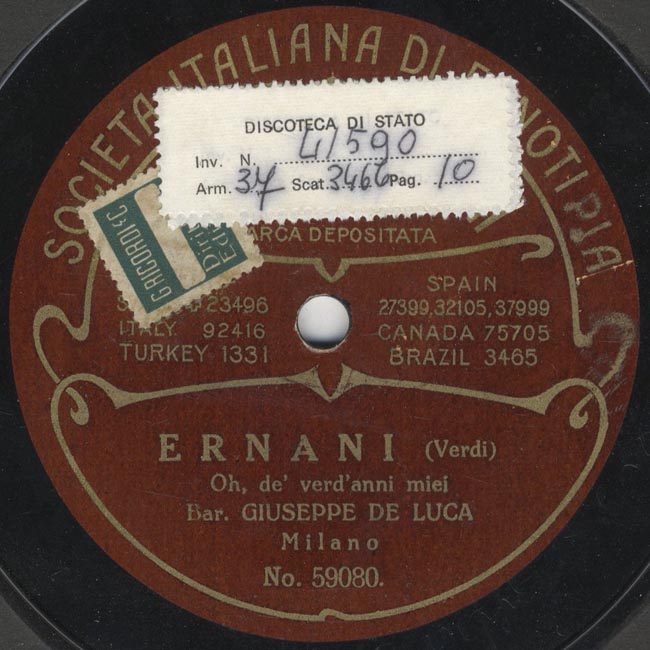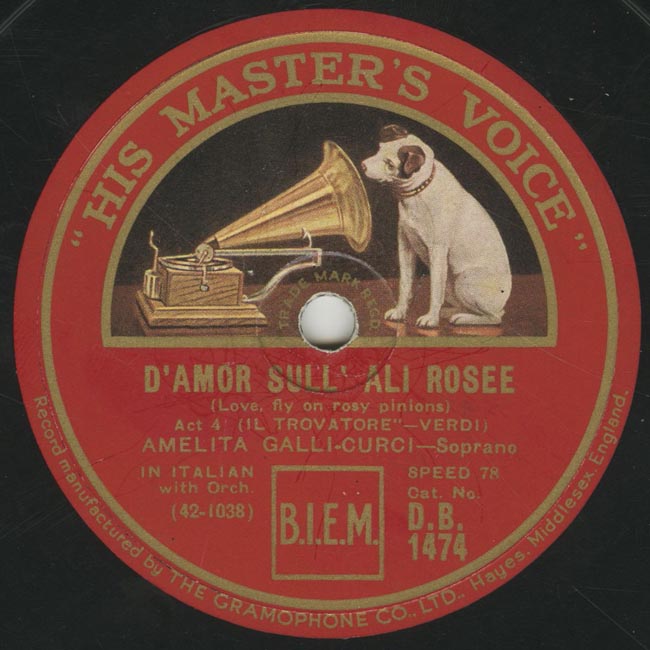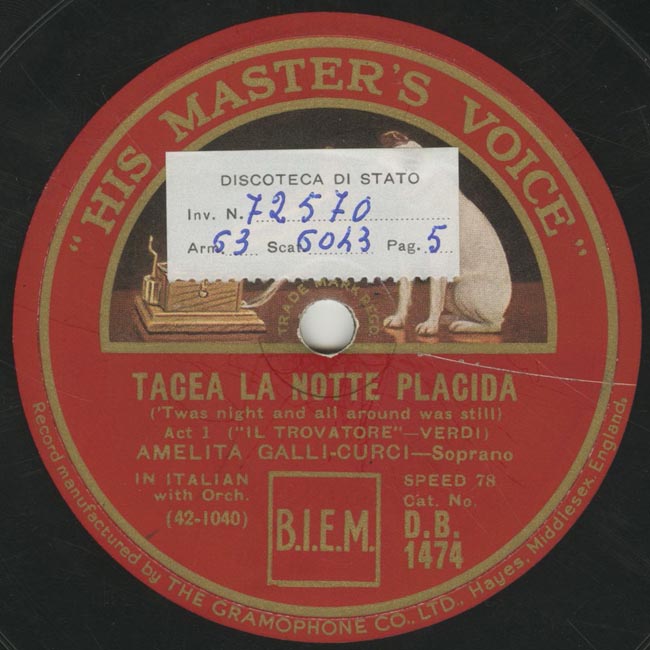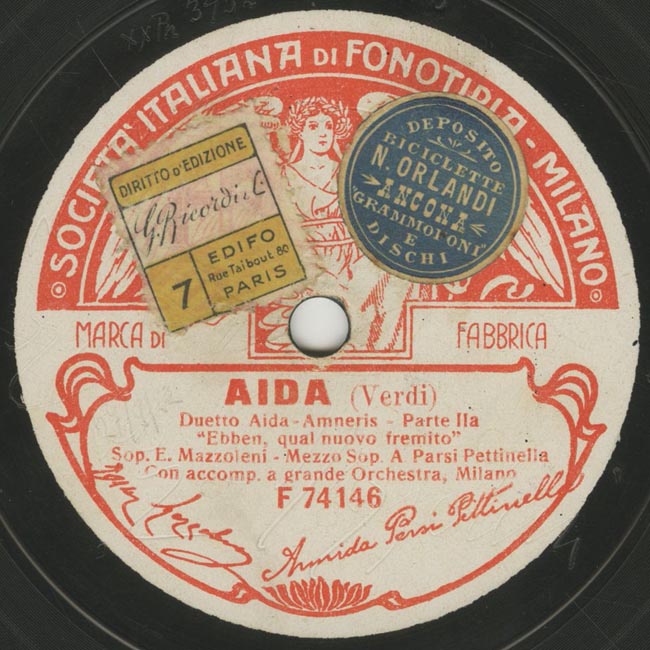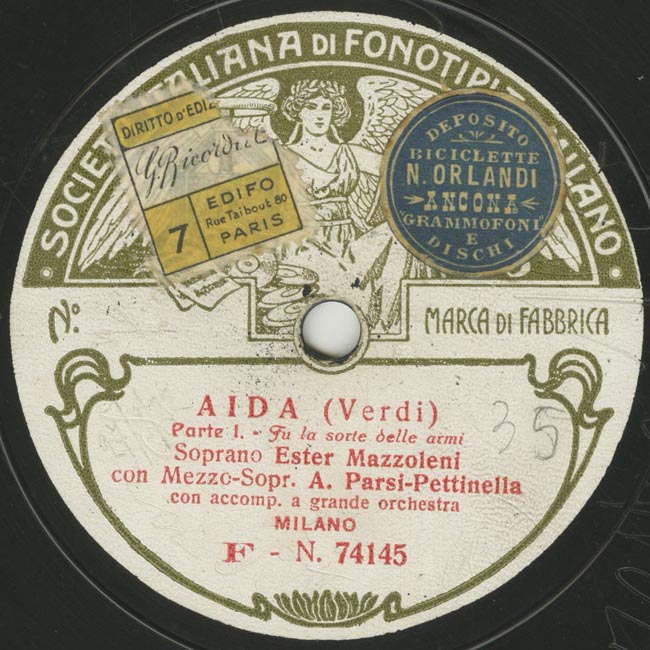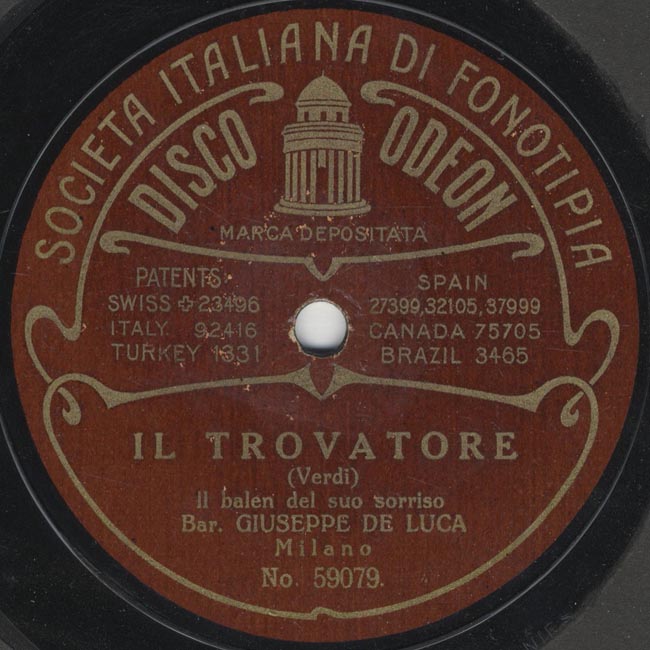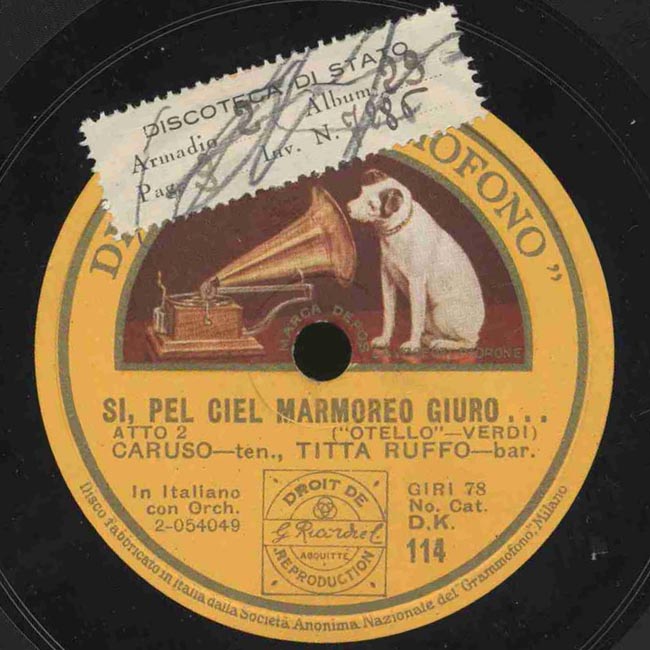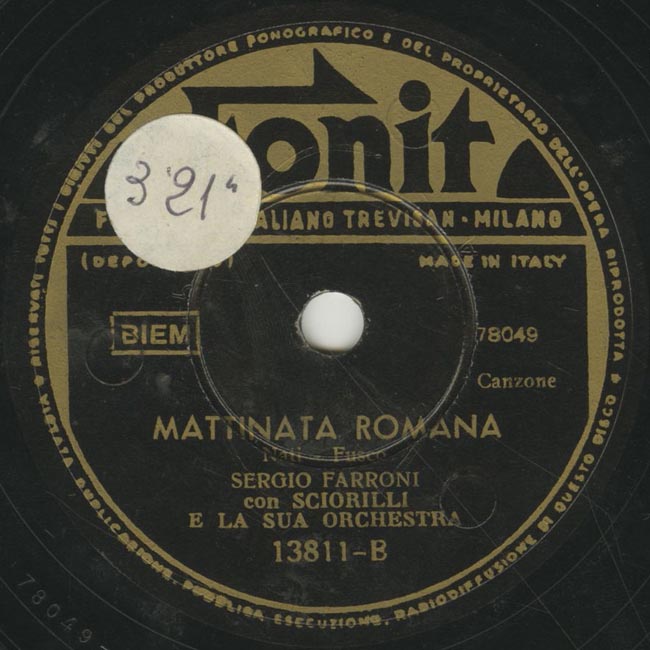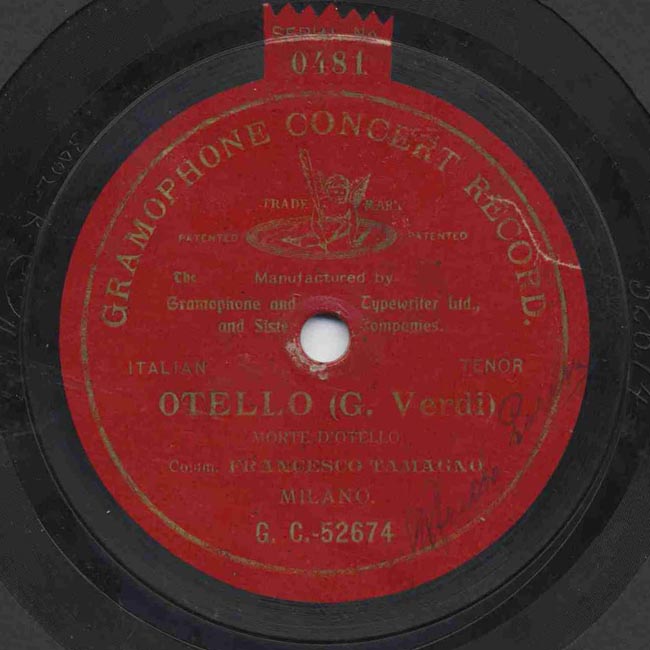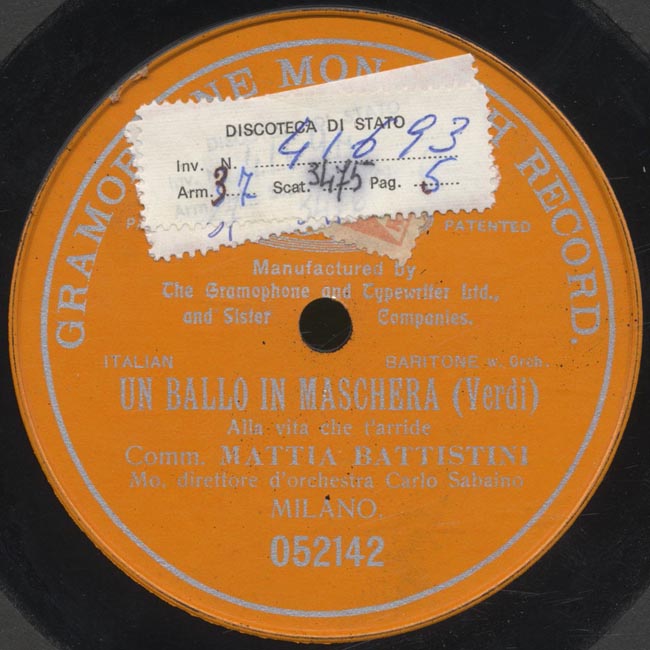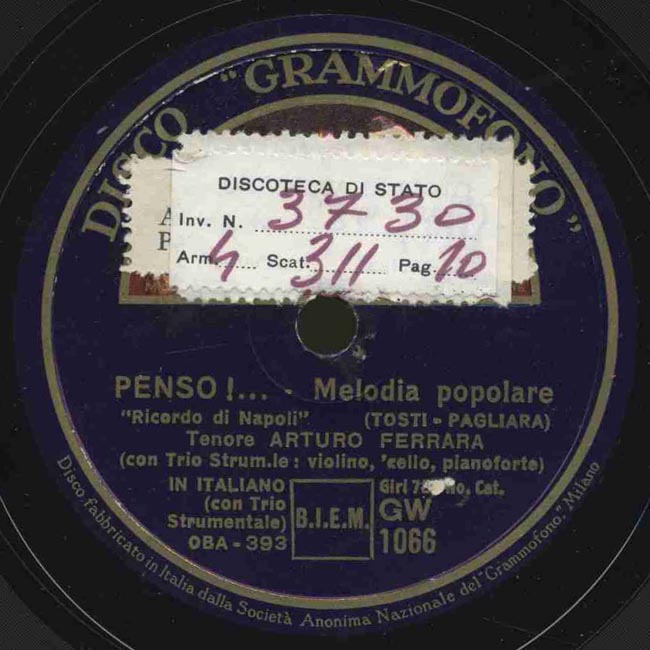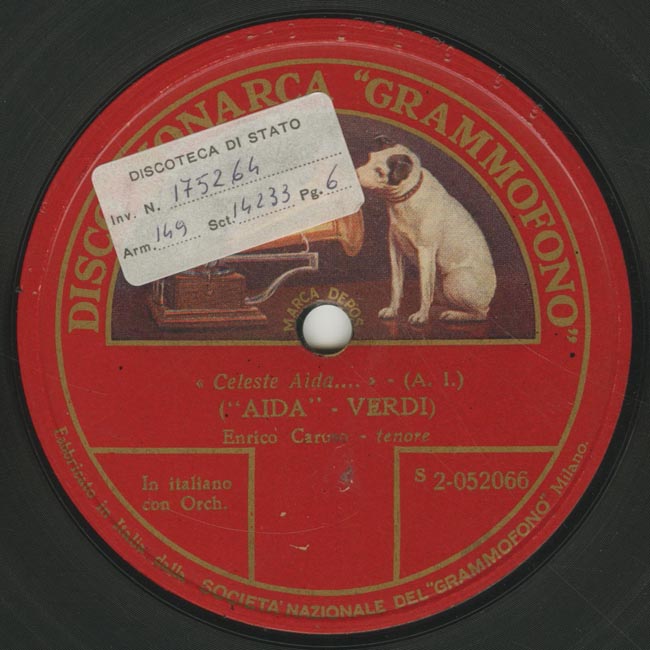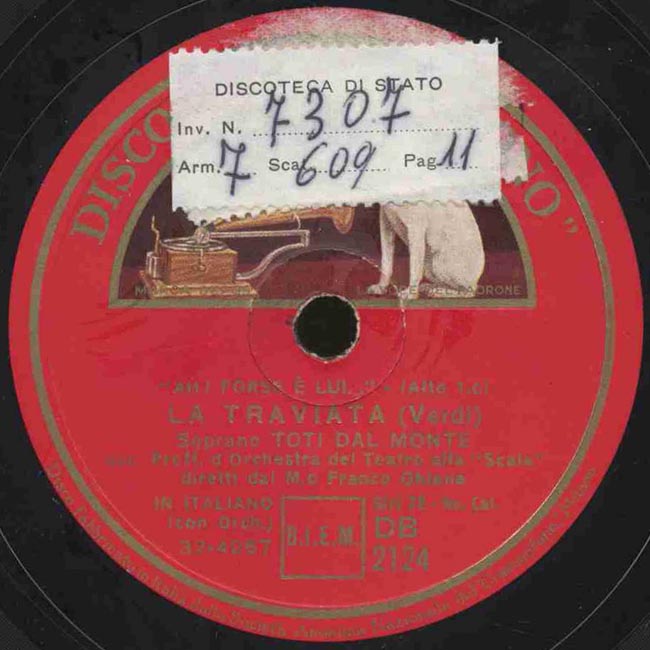ARIAS AND ROMANCES
The Italian song was born of the convergence of three traditions rooted in as many places of production and consumption: the street (folk songs), the theatre (the place consecrated to music and the preserve of the upper classes) and the parlour (the home environment that promoted amateurism). In the nineteenth century it was above all the theatre (a public space) and the living room (a private space) to nurture a production whose stylistic imprint and literary inspiration owes much to “high” models of melodrama and requires an interpretive approach that was true to the conventions of the bel canto. With the rapid spread of phonography during the early twentieth century, opera arias acquired a second life on records or on cylinders: taken out of their original context and proposed by international stars already familiar to theatre audiences such as Enrico Caruso, Adelina Patti, Francesco Tamagno, Luisa Tetrazzini or Rosa Ponselle, arias were to constitute the most desirable recordings. Thus it became possible to listen to, and endlessly replay in the privacy of one’s home, the most famous melodies by Verdi, Puccini, Donizetti, Bellini and other popular authors that have made Italian opera famous worldwide. The same goes for the romance, generally similar to the Lied but characterized by more sentimental features, and accessible to amateurs and non-professional singers. Designed to be performed in the palaces of the aristocracy, and later in the homes of the upper and middle bourgeoisie, parlour music enjoyed a wide circulation in Europe in the late nineteenth and early twentieth century thanks to authors who lent their talents to opera (Puccini, Mercadante, Leoncavallo) but especially to composers such as Francesco Paolo Tosti (with whom Gabriele D'Annunzio collaborated), Luigi Gordigiani, Stanislao Gastaldon, and Ciro Pinsuti, who all specialized in the genre and represent an important link between cultured aspirations and the need to reach as wide an audience as possible.

